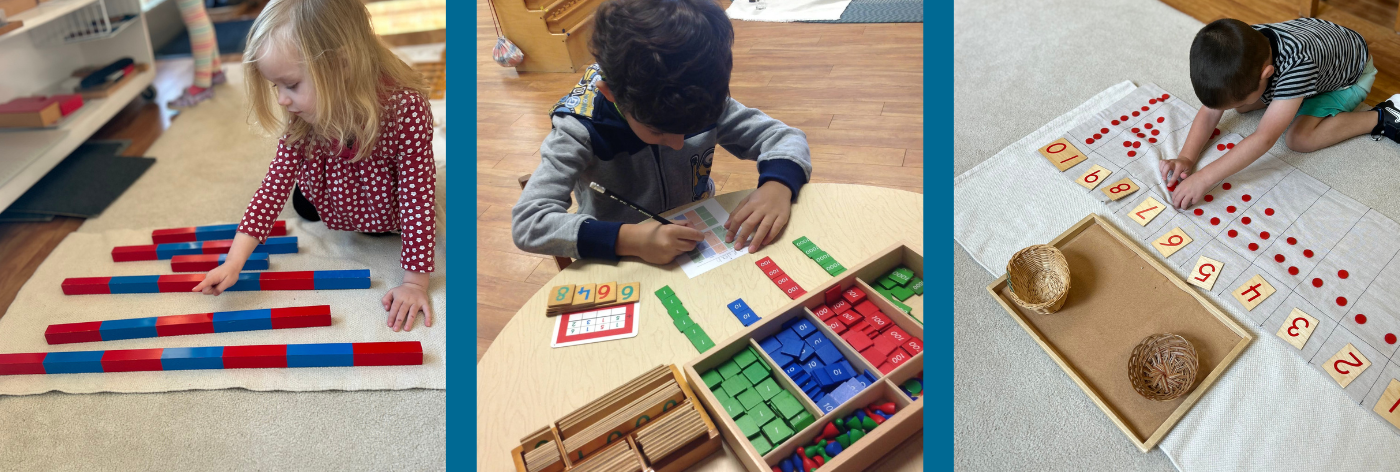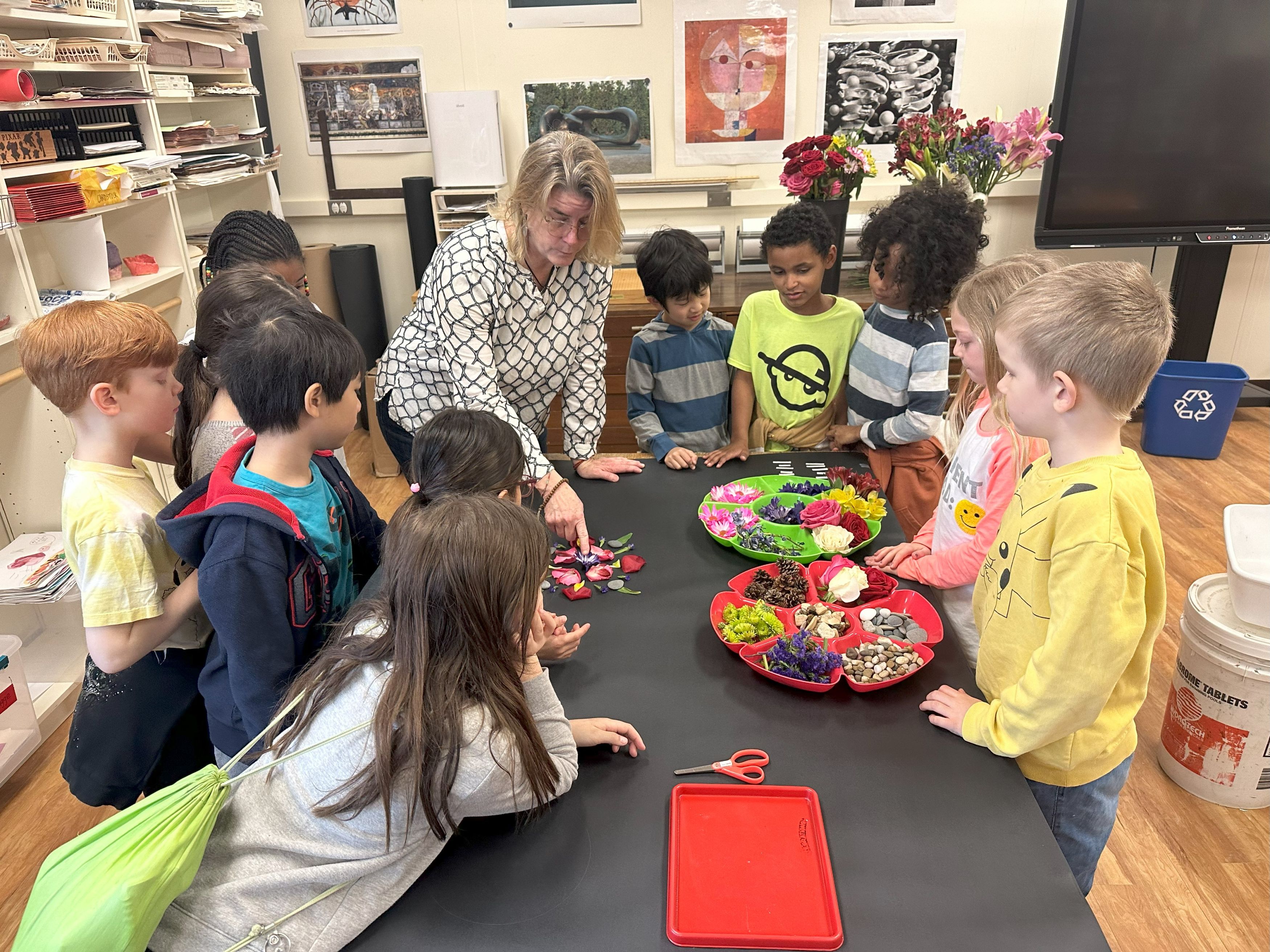

Program
Experience daily life at The Montessori School, where students from Toddler through Upper Elementary actively engage in learning. Guides serve as teachers and peers.
Curriculum

Dr Maria Montessori was able to identify “sensitive periods” during a child’s life during which time a child is sensitive to the development of certain skills. She observed that a child learns each skill best in isolation of other skills with real-life applications and with increasing difficulty and repetition. She also advocated “following the child”; that is, giving the right lesson at the right time and allowing the child to participate in his/her own progress. Maria Montessori developed a continuum of lessons (organized in a spiral fashion from level to level) and specific learning materials tailored to the basic philosophy and instruction that she advocated.
The Montessori curriculum is an integrated approach where diverse concepts are presented across the curriculum and in different ways as the children progress through the grades. Children have repeated opportunities within different contexts to practice skills being learned. This approach also emphasizes the interconnectedness of disciplines. TMS uses as its curricular base, the Montessori Scope and Sequence from The Montessori Foundation written by Tim Seldin. This curriculum meets the requirements of the Pennsylvania Academic Standards.
Choose areas below that you want to know more about.
TMS Montessori Programs
 The Montessori program at TMS is built on a well-prepared environment, quality materials that are used in each classroom, and teachers as “guides.” Together, these contribute towards the intellectual, social and emotional growth of children, and lasts a lifetime.
The Montessori program at TMS is built on a well-prepared environment, quality materials that are used in each classroom, and teachers as “guides.” Together, these contribute towards the intellectual, social and emotional growth of children, and lasts a lifetime.
Students strive to become leaders of the future, stewards of the earth, and ambassadors of peace. These qualities are aligned with our mission of educating young children and building a strong foundation for their future.
Explore our programming in more depth:
What is the role of a Guide?
At TMS, a child is with the same teacher (or guide) for three years; the child is known and appreciated thoroughly both as a person and a learner, and benefits from a trusting, supportive and enduring relationship with his/her teacher. As a novice in the 3-year classroom, the child is actively mentored by older children. Guided by the same caring adult, the child grows as a model and mentor to younger children, both academically and socially/emotionally. Learning how to navigate social relationships with other children increases personal confidence and leads to more mature social skills.
 Children’s House students develop control of movement, fine motor skills and eye/hand coordination that are provided in the “Practical Life” curriculum. Elementary Art builds on this foundation and strikes a balance between skill instruction and free exploration. Art recognizes a child’s natural desire for self-expression and the need to build a child’s art vocabulary. Awareness of artists and their techniques and knowledge of the various forms of art expression, from architecture to painting to sculpture to computer graphics, are important components of the program.
Children’s House students develop control of movement, fine motor skills and eye/hand coordination that are provided in the “Practical Life” curriculum. Elementary Art builds on this foundation and strikes a balance between skill instruction and free exploration. Art recognizes a child’s natural desire for self-expression and the need to build a child’s art vocabulary. Awareness of artists and their techniques and knowledge of the various forms of art expression, from architecture to painting to sculpture to computer graphics, are important components of the program..JPG)